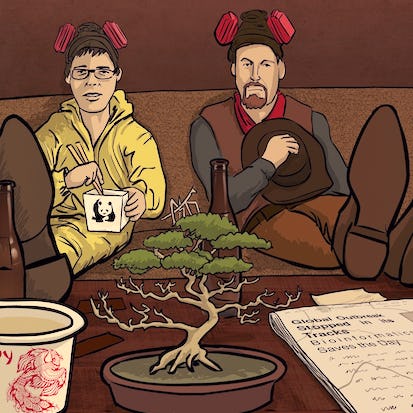- Level Foundation
- Duration 18 hours
- Course by University of California San Diego
-
Offered by

About
In the previous course in the Specialization, we learned how to compare genes, proteins, and genomes. One way we can use these methods is in order to construct a "Tree of Life" showing how a large collection of related organisms have evolved over time. In the first half of the course, we will discuss approaches for evolutionary tree construction that have been the subject of some of the most cited scientific papers of all time, and show how they can resolve quandaries from finding the origin of a deadly virus to locating the birthplace of modern humans. In the second half of the course, we will shift gears and examine the old claim that birds evolved from dinosaurs. How can we prove this? In particular, we will examine a result that claimed that peptides harvested from a T. rex fossil closely matched peptides found in chickens. In particular, we will use methods from computational proteomics to ask how we could assess whether this result is valid or due to some form of contamination. Finally, you will learn how to apply popular bioinformatics software tools to reconstruct an evolutionary tree of ebolaviruses and identify the source of the recent Ebola epidemic that caused global headlines.Modules
Welcome to Class!
1
Videos
- (Check Out Our Wacky Course Intro Video!)
1
Readings
- Course Details
Week 1: Which Animal Gave Us SARS? (Part 1/3)
1
Assignment
- Week 1 Quiz
1
External Tool
- Interactive Text for Week 1
4
Videos
- The Fastest Outbreak
- Transforming Distance Matrices into Evolutionary Trees
- Toward an Algorithm for Distance-Based Phylogeny Construction
- Additive Phylogeny
1
Readings
- Week 1 FAQs (Optional)
Complete the Code Challenges!
1
External Tool
- Open in order to Sync Your Progress: Interactive Text for Week 1
Week 2: Which Animal Gave Us SARS? (Part 2/3)
1
Assignment
- Week 2 Quiz
1
External Tool
- Interactive Text for Week 2
3
Videos
- Using Least Squares to Construct Distance-Based Phylogenies
- Ultrametric Trees
- The Neighbor-Joining Algorithm
1
Readings
- Week 2 FAQs (Optional)
Complete the Code Challenges!
1
External Tool
- Open in order to Sync Your Progress: Interactive Text for Week 2
Week 3: Which Animal Gave Us SARS? (Part 3/3)
1
Assignment
- Week 3 Quiz
1
External Tool
- Interactive Text for Week 3
4
Videos
- Character-Based Tree Reconstruction
- The Small Parsimony Algorithm
- The Large Parsimony Algorithm
- Evolutionary Tree Reconstruction in the Modern Era
1
Readings
- Week 3 FAQs (Optional)
Complete the Code Challenges!
1
External Tool
- Open in order to Sync Your Progress: Interactive Text for Week 3
Week 4: Was T. rex Just a Big Chicken? (Part 1/2)
1
Assignment
- Week 4 Quiz
1
External Tool
- Interactive Text for Week 4
4
Videos
- Paleontology Meets Computing
- Decoding an Ideal Spectrum
- From Ideal to Real Spectra
- Peptide Sequencing
Complete the Code Challenges!
1
External Tool
- Code Challenges for Week 4
Week 5: Was T. rex Just a Big Chicken? (Part 2/2)
1
Assignment
- Week 5 Quiz
1
External Tool
- Interactive Text for Week 5
5
Videos
- Peptide Identification
- Spectral Dictionaries
- The Ostrich Hemoglobin Riddle
- Searching for Post-Translational Modifications
- Spectral Alignment Algorithm
Complete the Code Challenges!
1
External Tool
- Open in order to Sync Your Progress: Interactive Text for Week 5
Bioinformatics Application Challenge: Evolutionary Tree Construction
1
Peer Review
- Bioinformatics Application Challenge
Auto Summary
Discover the fascinating world of molecular evolution with this bioinformatics course focused on evolutionary tree construction and evidence of species evolution. Led by Coursera, this foundational course delves into computational methods to trace virus origins and evolutionary links between species, like birds and dinosaurs. Over 1080 minutes, you'll explore cutting-edge bioinformatics tools and techniques. Available with Starter and Professional subscription options, this course is ideal for health and fitness enthusiasts interested in evolutionary biology and bioinformatics.

Pavel Pevzner

Phillip Compeau


